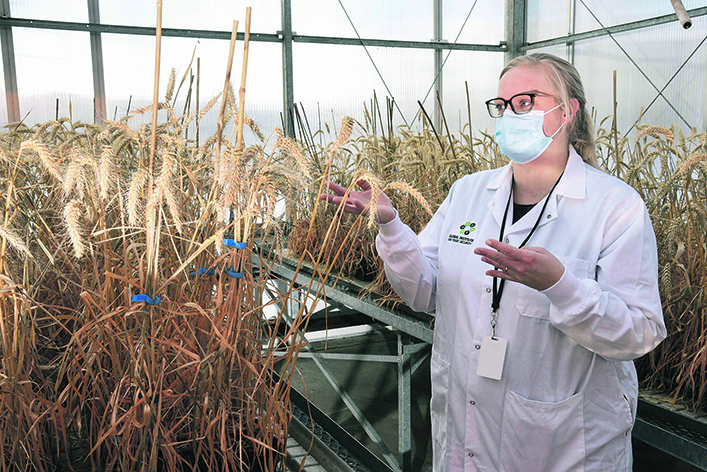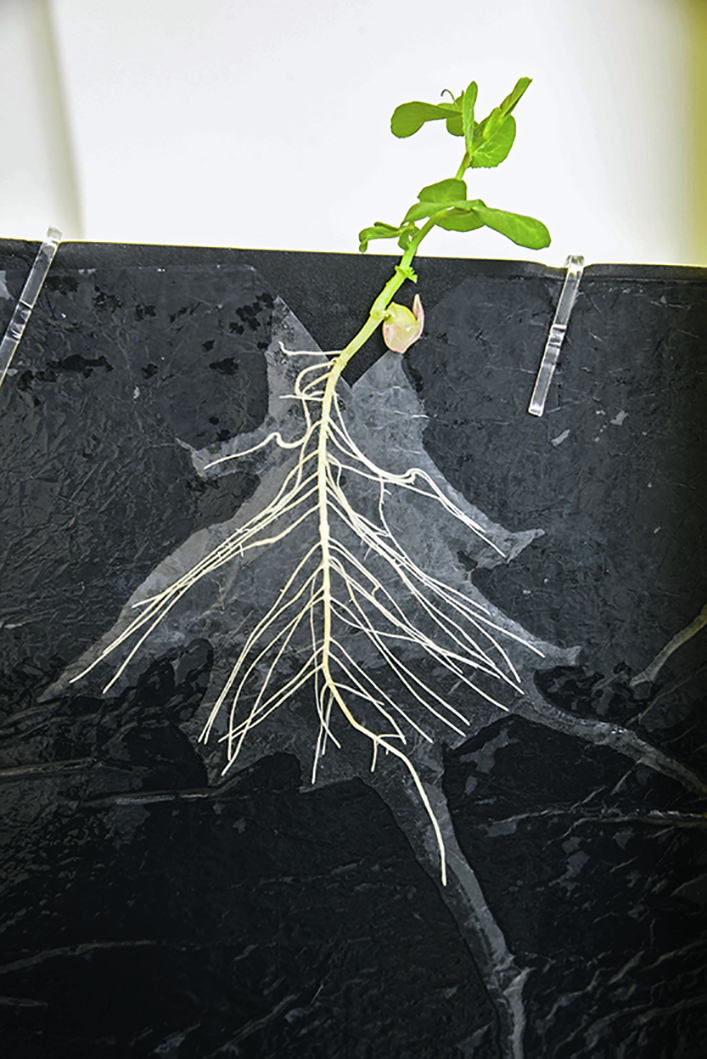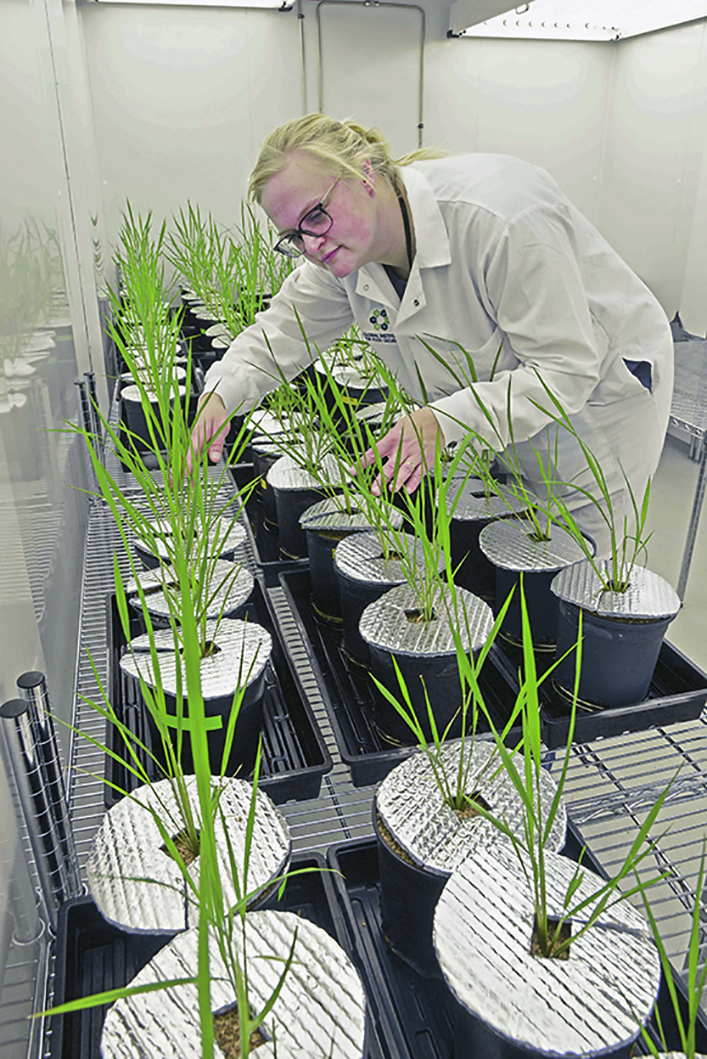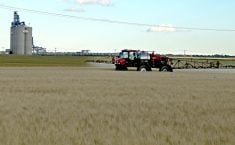Global Institute for Food Security eyes naturally occurring genetic variations that improve nitrogen, phosphorus uptake
A recent explosion in wheat genomic data could improve phosphorus and nitrogen uptake as well as efficiency in bread wheat.
As the cost of fertilizers increases, having new varieties is good news for wheat growers to get better returns on their inputs while providing significant environmental value.
Researchers at the Global Institute for Food Security (GIFS) at the University of Saskatchewan are focused on identifying naturally occurring wheat alleles (genetic variations) that improve nitrogen and phosphorus uptake from the soil.
Nutrients would also be used more efficiently within the plant to produce leaves, turn sunlight into glucose through photosynthesis and produce high-quality seeds.
Leon Kochian, Canada Excellence Research Chair in Global Food Security at GIFS, and Wendy Lyzenga, a GIFS research associate, are leading the three-year project, which was awarded $295,000 by Saskatchewan’s Agriculture Development Fund, including co-funding from the Saskatchewan Wheat Development Commission, Alberta Wheat Commission, Manitoba Crop Alliance, and Western Grains Research Foundation.
“We’re aiming to identify naturally occurring gene variants that are found in wheat grown in Canada. We want to find gene variants that cause specific traits in wheat. For example, we’re looking for variants that cause wheat to have a larger and finer root system,” said Lyzenga.
“Wheat with larger and finer root systems have more surface area, and therefore make more contact with the soil and are better able to absorb nitrogen and phosphorus,” she said.
Kochian added that these genes have always been in natural wheat populations but can have different versions of the gene in some of the different cultivars.
These different variants have slightly different DNA sequences. Some gene variants can lead to improvements in wheat, like larger root systems that can more effectively take up nitrogen or phosphorus.

Crop plants typically only use about half of the phosphorus and nitrogen fertilizer applied by farmers to the soil, which comes at considerable cost to producers and the environment.
Studies have found that increasing phosphorus uptake efficiency by 30 percent would result in savings of $2.5 billion over five years and $6.5 billion over 10 years for farms, municipal water treatment costs and sustainable water systems.
“The economic analysis was done using multiple crops across the board and is not restricted to wheat,” said Lyzenga.
One of the genes the researchers will be looking at was discovered in rice and subsequently identified in sorghum, which is not a Canadian crop, but is an important crop in Africa and in the United States for animal feed.
“We’re going to be taking that information and looking for variants of that gene in wheat,” she said.
The cutting-edge tools used at GIFS, including easier techniques for gene editing, has resulted in the recent sequencing of 15 wheat genomes.
“Before gene editing was mainstream, it was very difficult to determine which gene variants cause which traits. Wheat has a huge and complex genome; however, gene editing provides a clear-cut method for determining which gene variants are responsible for favorable or unfavorable traits.”
“The favorable gene variants discovered in this project will be shared with wheat breeders so that these gene variants can be integrated into new varieties using conventional breeding methods,” she said.
A recently led project by the U of S that sequenced the genomes of 15 wheat varieties is enabling researchers and breeders to identify influential genes more quickly for improved yield, pest resistance, and other crop traits like phosphorus and nitrogen efficiency.

There is already a significant amount of information about what genes are responsible for phosphorous and nitrogen uptake in other crops, which the researchers will capitalize on to find similar gene variants in Canadian wheat.
Next generation sequencing (NGS) will then determine how many allelic variants there are for nitrogen and phosphorous genes in Canadian wheat-breeding populations. The team will then use gene-editing technology to test which gene variant will produce the most favourable traits in wheat.
“The first thing that we’re doing in the project is we are going to sequence our candidate genes across approximately 50 varieties of wheat, and we’re going to try and focus on varieties of wheat that are relevant to Canadian breeding programs,” she said.
“Once we’ve identified these allelic variants, then we’re going to use gene editing to test them in a variety of wheat to see which allelic variants are most beneficial with regards to phosphorus or nitrogen use efficiency.”
Another piece of the puzzle lies in the roots. In the past, Kochian said plant breeders have not bred for better roots because they can’t see them.

“What we’re doing more broadly is focusing on root traits. So, what we’re doing is using other approaches, often to identify genes or markers to make roots that can do better with less water and less nitrogen and phosphorus.
“So, I think with our tools we can ultimately work with plant breeders to help them develop crops that have better root systems and be more climate resilient, better sustainable agriculture in terms of using less fertilizer, and also sequester more carbon in the soil because you have bigger roots,” he said.
“Within three years, we could potentially give really useful information to breeders. They would have to take it from there to the new varieties for farmers.”
Added Lyzenga, “There is an unreached potential for root system improvement. Better roots don’t just improve nitrogen and phosphorous uptake, better roots can also enhance water uptake and improve drought tolerance. So, we could get lucky and improve multiple traits in a variety with a better root system,” she said.


















